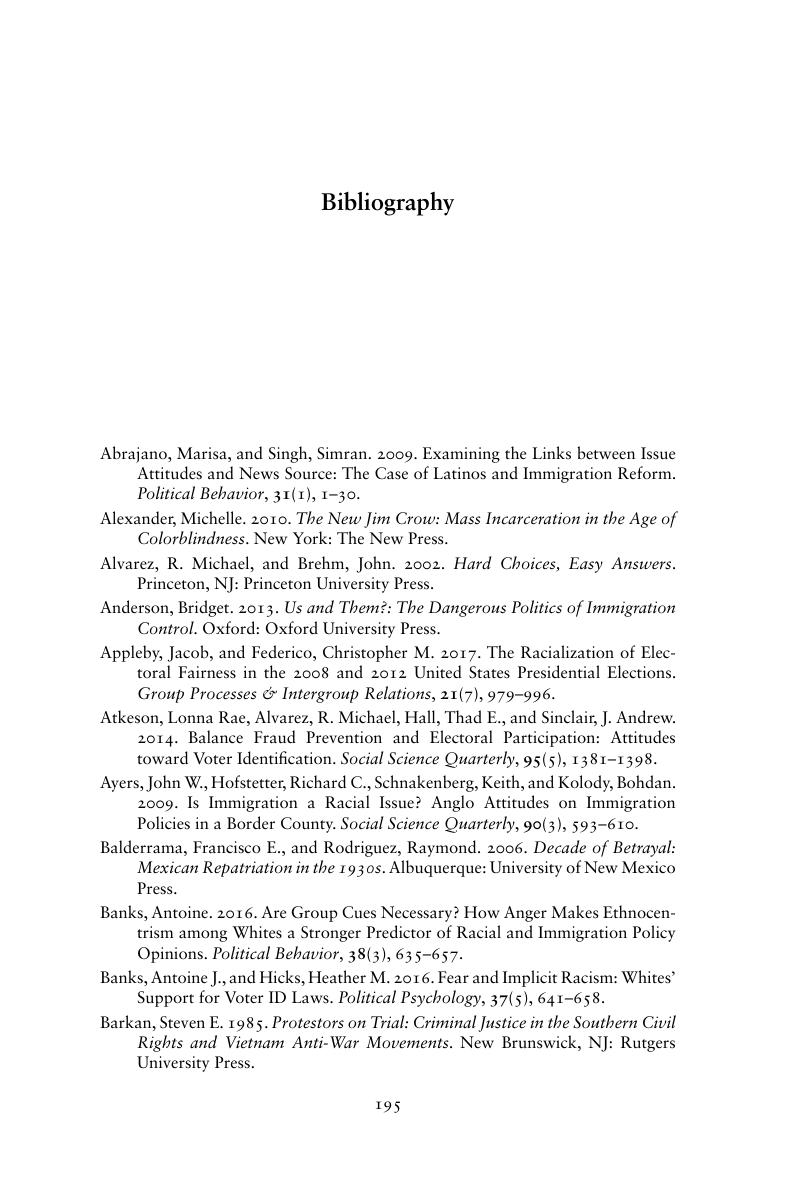Book contents
- Frontmatter
- Dedication
- Contents
- List of Figures
- List of Tables
- Preface
- Acknowledgements
- 1 Racism Ignored
- 2 The Racialization of Latinos
- 3 The Measurement of Latina/o Racism-Ethnicism
- 4 Why White America Opposes Immigration
- 5 Attitudes about Punishment and Policing
- 6 Why Whites Favor Restrictive Voting Laws
- 7 The Electoral Implications of Latina/o Racism-Ethnicism
- 8 Conclusion
- Appendix A Sample Details
- Appendix B Measurement
- Bibliography
- Index
- References
Bibliography
Published online by Cambridge University Press: 05 June 2020
- Frontmatter
- Dedication
- Contents
- List of Figures
- List of Tables
- Preface
- Acknowledgements
- 1 Racism Ignored
- 2 The Racialization of Latinos
- 3 The Measurement of Latina/o Racism-Ethnicism
- 4 Why White America Opposes Immigration
- 5 Attitudes about Punishment and Policing
- 6 Why Whites Favor Restrictive Voting Laws
- 7 The Electoral Implications of Latina/o Racism-Ethnicism
- 8 Conclusion
- Appendix A Sample Details
- Appendix B Measurement
- Bibliography
- Index
- References
Summary

Information
- Type
- Chapter
- Information
- Ignored RacismWhite Animus Toward Latinos, pp. 195 - 214Publisher: Cambridge University PressPrint publication year: 2020
